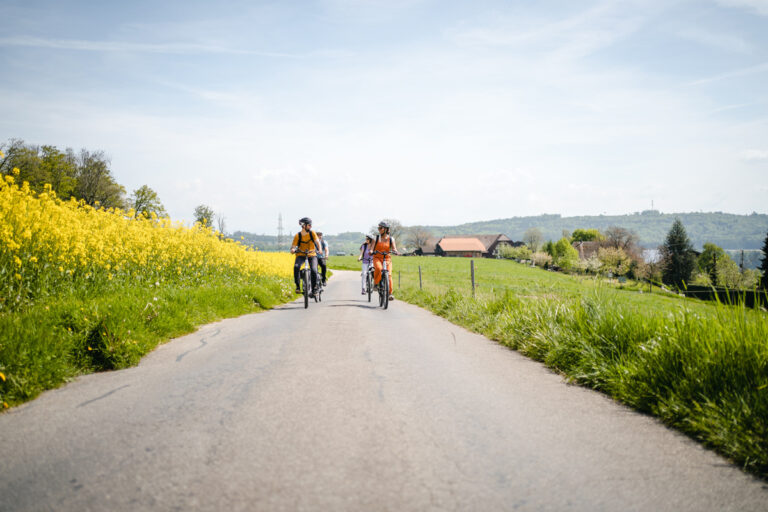Many retirees wonder how to spend some of their time once they’re done with work. After many years of spending long hours on the job and with responsibilities to your family after work, the newfound free time can be almost overwhelming. What if there was an activity that could keep you active, can take as much or as little time as you like, can be done socially or independently, and is also fun? We have just the suggestion for you: cycling!
Before you turn away and say: “That’s not something I can do,” let me emphasize that cycling is truly for anyone. There are options for those who don’t want to exercise for more than 10 minutes and have no desire to leave the comfort of their home, to those who want to spend days going camping with their bikes. Here, we’ll dive into all the ways that you can be active in retirement with a bicycle, and all the benefits it can bring to your life.
Why Should I Get Involved in Cycling?
Cycling offers a wide array of benefits. The first, and arguably one of the most important is the health benefits. As we age, keeping our hearts healthy is critically important for enjoying our later years and living a long life. Cycling allows you to work your heart at a lower heart rate (which you may sometimes hear as Zone 2 training) for a long time, giving your cardiovascular system a large stimulus without a lot of stress to other parts of your system. Speaking of other stressors, if you have bad joints and can’t do other forms of exercise, cycling is a low-impact sport like swimming that is easy on your knees. Within health benefits are the mental health benefits of being outside in nature, exercising, and feeling a sense of accomplishment.
Cycling offers the opportunity to connect socially with others. Most major cities have Facebook Groups and other groups that will meet up and ride together. These rides can be social rides at leisurely paces, or fast-paced rides, so make sure you know what type of ride you’re signing up for! Groups will often stick around and chat and grab coffee or drinks after their rides, so if you’re interested in expanding your group of friends as a retiree you can consider joining some group rides!
Cycling gives us the possibility to explore in a new way. You’ll spend time on trails and roads that you likely would never have ventured onto if you were just in a car, and probably wouldn’t have appreciated if you were going car-speeds. The lesser-taken paths often are beautiful and unique places that will build your appreciation for where you live.
Cycling has something for everyone: you can stay inside on a stationary bike, ride mountain bikes on trails, or take your e-bike to the grocery store. However you do it, you’ll quickly find yourself happier, healthier, and more engaged with your community.
What do I need to get started?
At the most fundamental level, all you need is a bike, a helmet, and something to carry water in. That’s it! The fancy gear and bikes are nice to have, but if you’re simply dipping your toes into the world of cycling, it’s better to take it one step at a time rather than going out and dropping thousands on equipment that won’t get used.
Now, once you’ve decided that you enjoy cycling, there are a lot of different items you can buy. If I were starting over again and repurchasing all of the accouterments that I’ve collected, this is the order I would go in. First, get a decent pair of bib shorts. They look a bit silly when you put them on, but they make a world of difference in terms of comfort. Next, buy a cycling specific shirt also known as a jersey. You don’t have to get a tight-fitting one, but something to help wick the sweat away makes a really big difference in your comfort. Next, grab some cycling specific shoes. These will be much stiffer than tennis shoes which are designed to absorb impact when your foot strikes the ground. However, when riding a bike the stiffer sole allows more of the energy you put into the pedal to be transferred to the wheel. There are two options for shoe and pedal combinations: flat pedals and so called “clipless” pedals, which will lock you into the shoe. There is no major difference between these two, so you can try both and see which is more comfortable for you. The last item in terms of your clothing, or as you may hear from other cyclists, is your kit, which is gloves, sunglasses, and other wearable accessories. Your primary concern when starting should be comfort, not speed. Fast is fun, but we want to make sure you keep cycling.
Once you’ve gotten into it, you may decide you need a new bike. You’ll quickly find the rule for the number of bikes one should own is N+1, with N being the number of bikes you currently own. There are many different styles and disciplines of bikes, so in the next section, we’ll dive into what bikes you can buy, and what they’re designed for.
What are the different kinds of bikes and cycling?
E-Bikes
E-bikes are all the rage lately. One thing that may be somewhat confusing about E-Bikes is that any other style of bike can be an E-bike. That means there are E-road bikes, E-mountain bikes, and E-hybrid bikes. What this means for you is that if you think an E-bike is right for you, you still will need to narrow it down to another style of bike and purchase an E-bike in that category.
E-bikes work by using a battery that is attached to the frame of the bike. They are usually controlled by a display in the cockpit of the bike and have different choices for the amount of extra power you can add to your bike. E-Bikes fall into three classes. The Class 1 means it is pedal-assisted only (you have to pedal to have it give power), with no throttle and a max speed of 20 mph. Class 2 means there can be a throttle and a max speed of 20 mph. Class 3 is pedal-assisted only and has a max speed of 28 mph.
Road Bikes
Road bikes are designed for performance on paved roads and bike paths. They are characterized by skinny tires, lightweight frames designed with aerodynamics in mind, and drop bars (the handlebars that have downward curls on them). A road bike may be a good fit for you if you are interested in racing or going fast, and speed is your main concern.
A subcategory of road bikes you may hear about is gravel bikes. These are road bikes designed specifically for riding on gravel roads, a burgeoning discipline as it allows one to ride on much less populated roads. These bikes have slightly wider tires with knobs for grip, have more compliance in their frame to absorb the vibrations of gravel roads, and have gearing more suited for steeper roads that you may see when riding gravel.
Hybrid Bikes
Hybrid bikes are a great place to start if you don’t have any experience with bikes. They have wider but still smooth tires for comfort on paved bike trails, a more upright position, a larger saddle, and flat handlebars. These bikes are usually on the cheaper side as well, making them excellent as introductory bikes. While hybrids are comfortable, they still are somewhat influenced by road bikes and can be quick, which is where the hybrid name comes from.
Mountain Bikes
Mountain bikes are purpose-built for riding on offroad singletrack style trails. They have wide knobby tires that grip on loose dirt and rock, wide flat handlebars for stability, and some form of suspension. Mountain bikes are slow on pavement due to being heavy and having wide tires, but if off-road riding is what piques your interest, a mountain bike might be great for you!
Mountain bikes have a few subcategories. The first set is hardtail or full suspension. A hardtail only has suspension on the front wheel, hence the name. A full-suspension bike has suspension in the front and the rear. Generally speaking, full suspension is better suited for more technical terrain.
The other set of subcategories is what the bike is designed for. Cross-country mountain bikes have limited suspension and are intended for going fast on less technical terrain. These bikes can be hard-tails or full suspension. Trail bikes are the happy medium and what will work best for most people. They are equally as capable of going uphill quickly and descending well. They are the jack of all trades but masters of none. Next are enduro bikes. These bikes are built for going downhill but can still come uphill if needed. They were originally built for an event called enduro, where downhill sections are timed but uphill sections are not. However, they have become popular as casual bikes because they are a blast to ride downhill.
Cruisers
A cruiser is designed with comfort in mind first and foremost. These have very wide tires, upright positions, and sweeping and comfortable handlebars. When you think about bikes in Amsterdam or on Santa Monica beach, most are cruisers. Cruisers are slow but comfortable, and most have their frames set up so they can be easily stepped through if you lack mobility. Cruisers are a fun way to well, cruise!
Conclusion
Cycling is a great way to stay healthy in retirement. It offers opportunities for exercise and socialization. It is for everyone, and there are lots of different ways to get involved in cycling, from mountain biking to cruising on the local bike path. No matter what, cycling should be fun. We encourage you to get out there, see what you like, have fun, and stay healthy!




